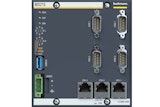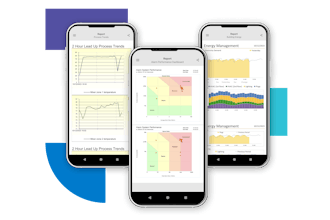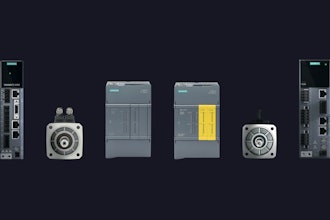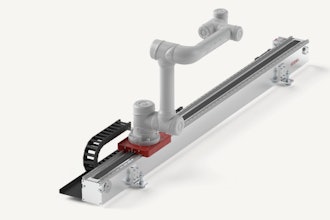Today’s manufacturers have more quality data at their fingertips than ever before. From digital weight scales and gauges, to the latest sensors through the Industrial Internet of Things (IIoT), companies can use these tools to collect extensive amounts of data about their production processes—across multiple lines and sites, around the clock. When the data are available in real time to plant-floor operators and quality professionals, it is possible to spot manufacturing issues before they compound, make timely corrections, and thereafter determine where to focus process improvement efforts at the plant and enterprise levels.
Real-time quality data helped one global elevator manufacturer quickly spot inconsistencies in its elevator wall panel machining process. Previously, out-of-spec wall panels would cause construction delays, costing significant time and money. But with improved insight into factory operations, its quality teams could take immediate corrective action on problems in production, ensuring non-conforming materials never reach job sites. By continuing to track quality and process information, the company was also able to realize a 40 to 60 percent savings in manufacturing time, streamline auditing, and cut analysis time from weeks down to a few minutes.
To effectively sift through the amount of data coming from the modern plant floor and find real, valuable quality intelligence, however, there are essential pillars that manufacturers first need to have in place: standardization, centralized data, and prioritization.
Standardization in Manufacturing
Without standardization in quality management systems, overall processes, and naming conventions, it is practically impossible to align on-site teams to look at quality between lines and products—much less to take a global view across multiple plants. For instance, with naming conventions, a plastic bottle manufacturer might want to compare process data between two plants that make the same type of water bottle. One plant may use “Water Bottle 123,” while the other uses “Water-Bottle-123.” Even a small inconsistency such as a matter of dashes like this can prohibit comparative analysis.
By standardizing naming conventions—on parts, features, and processes—organizations can make sure everyone speaks a common language when referring to the multitude of components involved in the manufacturing process. This eliminates confusion between teams and encourages cross-plant analysis for quality intelligence that leads to global improvement. Likewise, standardizing quality software products fosters collaboration between teams, departments, and plants. Since everyone has the same tools and capabilities, people can freely share information and align on data-driven decisions.
A Centralized Data Repository
One way to encourage standardization, particularly in naming conventions, is through a centralized data repository in the cloud, where everyone saves and works from the same data pool. A centralized data repository creates a single system of truth, breaking down the disparities and data silos that often exist between multiple plants. Manufacturers can then gain enterprise visibility with insight into the performance of individual locations and operations from site to site.
One food & beverage company wanted to adopt a centralized data repository to decrease plant-to-plant manufacturing variations. It ended up centralizing data from six facilities and its corporate lab so that its quality assurances teams could access and respond quickly to fluctuations in data at specific sites. With this heightened visibility, the company can make rapid adjustments to prevent waste, reduce giveaway, and maintain a consistent taste profile. To date, real-time quality data analysis has helped the company realize $2.1 million in savings due to waste reduction alone. When extended to its other dozen plants, annual savings eclipse $10 million.
Prioritization of Process Improvement Efforts
Unified data makes it easier for manufacturers to start reviewing the different aspects of their operations and seeing how they are performing. With a clear, data-enlightened view, it is then possible to prioritize improvement efforts and allocate resources accordingly.
One innovative way of prioritization is “grading.” It is a function where software automatically processes streams of data from different products, lines, processes, or plants, applying Statistical Process Control (SPC) methods to provide quality teams a simple letter-number grade that represents the expected and potential yield for a specific stream. A grade of A, B, or C indicates each stream’s yield potential. Plus, a rank of 1, 2, or 3 represents the stream’s actual yield performance. So, an A1 grade is a high-yield stream that is meeting its full potential, while a C3 grade is a low-yield stream that is not meeting potential. These letter-number combinations give executives and quality professionals a quick glimpse into how each stream is performing for quick prioritization.
Grading can take process monitoring a step further, with the ability to drill down, layer by layer, and identify the root cause of poor performance. Quality teams can determine which fixes are easy wins, as in they require minimal effort but lead to big improvements in operations. For instance, it might be something as simple as a small tweak to equipment settings. Other corrective measures may be more expensive, such as replacing the equipment on an entire line. Insight into root cause and the level of effort required for improvement can help manufacturers better plan their budgets based on return on investment.
When manufacturers can harness the data being generated across the plant floor, they can enact real, positive change to their production processes. But they first need to get everyone on the same page and all of the data centralized in a single, unified repository. From there, they can determine where and how to drive improvements inside individual plants and across the whole enterprise, creating a distinct competitive advantage by way of quality.
Eric Weisbrod is vice president of product management at InfinityQS International, Inc.























